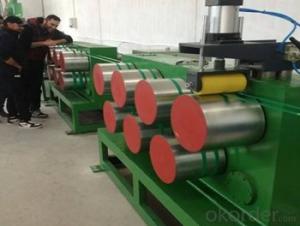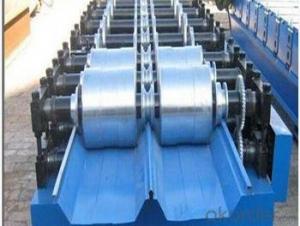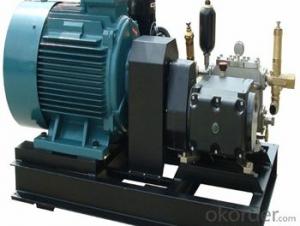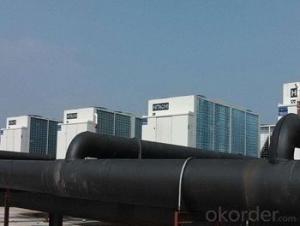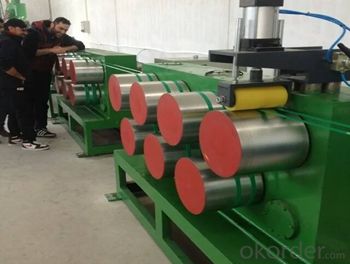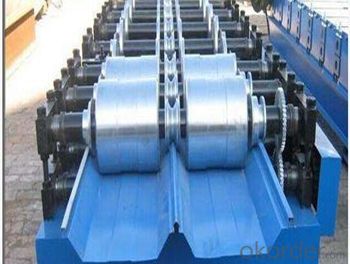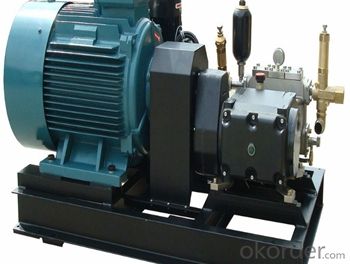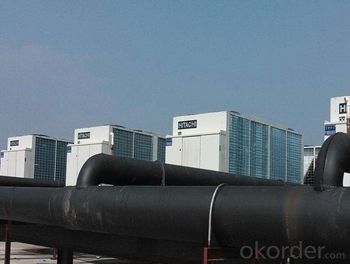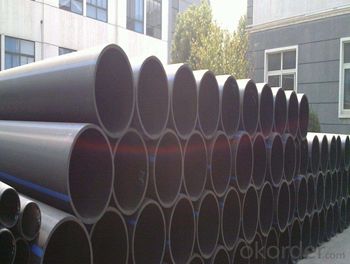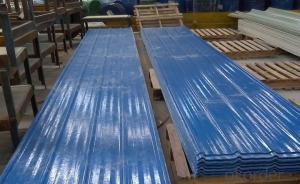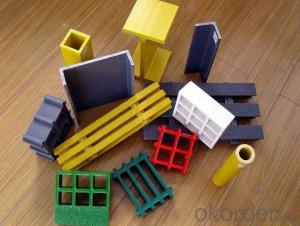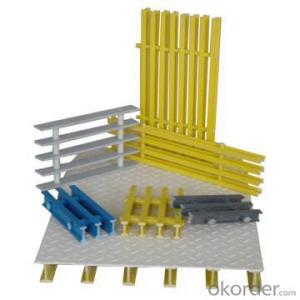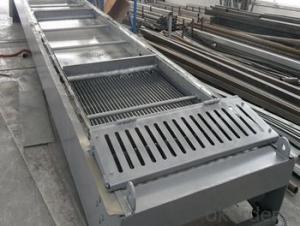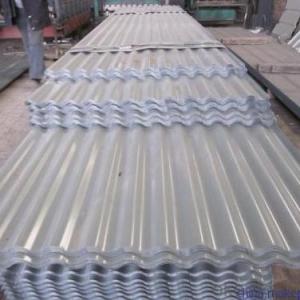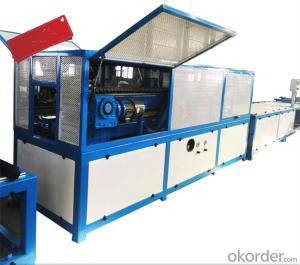FRP Pultrusion Profiles with Excellent Electromagnetism Property FRP Pultruded Gratings and Pultrusion Process of Different Styles
- Loading Port:
- Tianjin
- Payment Terms:
- TT OR LC
- Min Order Qty:
- 1 m.t.
- Supply Capability:
- 430000 m.t./month
OKorder Service Pledge
OKorder Financial Service
You Might Also Like
PRODUCT DESCRIPTION
Pultruded grating is made by a particular assembly process, which using “I” shape as its main load-bearing and special rod to go through the bearing bar. Pultruded grating include the standard grating and the custom grating, the custom grating can be designed to meet customer’s requirement or special using condition by changing the shape, size and space of the bearing bars, the surface can be covered with lozenge panel, grit panel, or added the anti-slippery sand directly.
SPECIFICATION
The standard space between two crossbars is 6 inch or 12 inch.
Thickness (mm) | Bar width (mm) | Open space (mm) | Open rate (%) | Approx weight (kg/m |
25.4 | 15.2 | 22.8 | 60 | 13.2 |
25.4 | 15.2 | 15.2 | 50 | 15.9 |
25.4 | 15.2 | 10.1 | 40 | 18.5 |
25.4 | 40 | 10.8 | 21 | 14.5 |
38.1 | 15.2 | 22.8 | 60 | 15.8 |
38.1 | 15.2 | 15.2 | 50 | 19.1 |
38.1 | 15.2 | 10.1 | 40 | 22.4 |
50.8 | 25.4 | 25.4 | 50 | 16.6 |
50.8 | 25.4 | 12.7 | 33 | 21.1 |
FEATURES
a. Anti-corrosion and anti-rust
b. Light weight and high strength
c. Anti-flammable
d. Anti- fatigue
e. Safe and anti-slippery
f. Anti-ageing
g. Easy of maintenance
h. Excellent electromagnetism property
i. Good economic benefit
FIELDS SERVED
Sewage treatment,
water supply and drainage,
chemical industry,
oil industry,
power engineering,
pulp and paper,
construction engineering,
spinning, marine engineering.
APPLICATION
Operation terrace,
stair walkway,
ground floor,
trench cover,
sidewalk,
foot bridge,
equipment safety fence,
scaffold.
COMPANT DESCRIPTION
CNBM,China National Building Materials Group is a state-owned enterprise in charge of administrative affairs in china building materials industry. Established in 1984, CNBM is a large group corporation of building materials with total assets of 25 billion RMB and a total staff of 30,000.CNBM now owns 200 subordinating firms of solely owned and joint-venture companies.
CNBM International Corporation is one subsidiary of CNBM, we focus on offering good-quality products,professional service and complete solution to our customers. Strong delivery capacity, advanced technology& management, strong financing capability and excellent after-sale service are our advantages in sharing international market.
FAQ
1.Q:Are you factory or trading company ?
A:We are Factory produce FRP machines and FRP products.
2.Q:If can customized by customers requirements?
A:yes,we can produce the machine with customized size.
3.Q:How about the payment?
A:We accept any kind of payment.
4.Q:What is the guarantee?
A:Gurantee is one year.
5.Q:If you can training?
A:yes ,we can training in our factory also can send engineers to your factory training.
PICTURES

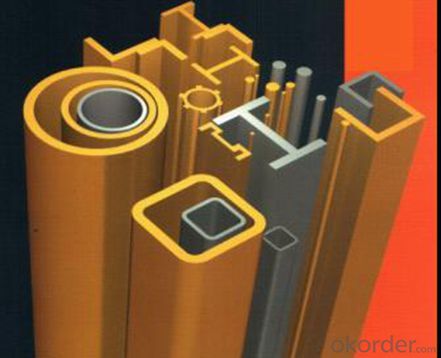
- Q: How is FRP pultrusion different from other manufacturing processes?
- FRP pultrusion is different from other manufacturing processes in its unique method of producing fiber-reinforced polymer (FRP) profiles. Unlike traditional processes like extrusion or injection molding, pultrusion involves pulling continuous fibers through a resin bath and then into a heated die, where they are cured and shaped into the desired profile. This continuous and automated process allows for the production of strong, lightweight, and corrosion-resistant FRP profiles with consistent mechanical properties. Additionally, pultrusion enables the incorporation of various fiber orientations and resin systems, making it highly versatile for customized applications.
- Q: Do you have any high temperature resistant resin made of pultruded glass fiber reinforced plastic?
- Process formula of high temperature epoxy resin pultrusion adhesive
- Q: Are FRP pultrusion profiles resistant to fuels?
- Yes, FRP (Fiber Reinforced Polymer) pultrusion profiles are highly resistant to fuels. Due to their inherent corrosion resistance and non-reactive nature, FRP pultrusions can withstand exposure to a wide range of fuels, including gasoline, diesel, and aviation fuels, without deteriorating or losing their structural integrity. This makes them suitable for various applications in industries such as automotive, aerospace, and oil and gas, where resistance to fuel exposure is crucial.
- Q: Are FRP pultrusion profiles resistant to hydrocarbons?
- Yes, FRP (Fiber Reinforced Polymer) pultrusion profiles are generally resistant to hydrocarbons. The combination of various reinforcing fibers such as fiberglass or carbon fiber with a polymer matrix makes FRP materials highly resistant to chemical corrosion, including hydrocarbons. This resistance makes FRP pultrusion profiles a suitable choice for applications where exposure to hydrocarbons is expected, such as in oil and gas industry, chemical processing plants, or fuel storage facilities. However, it is important to note that the level of resistance can vary depending on the specific type of resin used in the FRP material and the concentration and temperature of the hydrocarbons involved. Therefore, it is recommended to consult with the manufacturer or supplier of the FRP pultrusion profiles to ensure their compatibility with the specific hydrocarbon environment in question.
- Q: What is the fatigue resistance of FRP pultrusion profiles?
- The fatigue resistance of FRP pultrusion profiles is generally high due to the inherent properties of the material, such as its high strength-to-weight ratio, excellent stiffness, and resistance to corrosion. However, the specific fatigue resistance of FRP pultrusion profiles can vary depending on factors such as the type of resin used, the manufacturing process, and the design considerations. Overall, FRP pultrusion profiles are known to exhibit good fatigue performance and can withstand repeated loading cycles without significant degradation in mechanical properties.
- Q: Are FRP pultrusion profiles suitable for the manufacturing of boat hulls?
- Yes, FRP (Fiber Reinforced Polymer) pultrusion profiles are suitable for the manufacturing of boat hulls. FRP pultrusion profiles offer several advantages that make them ideal for boat hull construction. Firstly, FRP pultrusion profiles are lightweight yet extremely strong and durable. This makes them ideal for boat hulls as the lightweight construction allows for improved fuel efficiency and increased speed. Additionally, the high strength-to-weight ratio ensures that the boat can withstand the stresses and strains of the water without compromising its structural integrity. Secondly, FRP pultrusion profiles are highly corrosion-resistant. This is a crucial characteristic for boat hulls as they are constantly exposed to water, salt, and other corrosive elements. The corrosion resistance of FRP pultrusion profiles ensures that the boat hull remains intact and retains its performance over time, reducing the need for frequent maintenance and repairs. Furthermore, FRP pultrusion profiles offer design flexibility. They can be easily molded into various shapes and sizes, allowing for customization and optimization of boat hull designs. This flexibility enables boat manufacturers to create hulls that are not only functional but also aesthetically appealing. In addition to their strength, durability, corrosion resistance, and design flexibility, FRP pultrusion profiles also offer excellent electrical and thermal insulation properties. This is particularly important for boat hulls as it helps to prevent electrical currents and heat from passing through the hull, ensuring the safety and comfort of passengers and crew. Overall, FRP pultrusion profiles provide an excellent solution for the manufacturing of boat hulls. Their lightweight, strong, and corrosion-resistant properties, along with design flexibility and insulation capabilities, make them an ideal choice for boat manufacturers looking to create high-performance and long-lasting vessels.
- Q: Are FRP pultrusion profiles resistant to weathering?
- Yes, FRP pultrusion profiles are highly resistant to weathering. The pultrusion process creates a strong, durable, and non-corrosive material that is inherently resistant to various weather conditions. FRP (Fiber Reinforced Polymer) profiles are composed of a combination of fiberglass reinforcements and a thermosetting resin matrix. This unique composition provides excellent resistance to UV radiation, moisture, chemicals, and temperature fluctuations, making them ideal for outdoor applications. FRP pultrusion profiles have been extensively tested and proven to maintain their structural integrity and physical properties even after prolonged exposure to harsh weather conditions. They do not degrade, warp, or crack due to sunlight, rain, snow, or extreme temperatures, unlike traditional materials like wood or metal. This weather resistance allows FRP pultrusion profiles to be used in a wide range of applications, including construction, infrastructure, marine, and transportation industries. Furthermore, FRP pultrusion profiles have a low thermal expansion and contraction rate, ensuring dimensional stability in fluctuating weather conditions. This characteristic prevents the profiles from warping or distorting over time, making them an excellent choice for long-term outdoor use. In summary, FRP pultrusion profiles are highly resistant to weathering and offer long-lasting durability in various outdoor environments. Their ability to withstand UV radiation, moisture, chemicals, and temperature fluctuations makes them a reliable and cost-effective solution for a wide range of applications.
- Q: Are FRP pultrusion profiles resistant to chemicals used in pulp and paper mills?
- Yes, FRP pultrusion profiles are highly resistant to the chemicals commonly used in pulp and paper mills. This is due to the inherent chemical resistance of the fiberglass reinforced plastic material, which makes it an ideal choice for such environments.
- Q: How do FRP pultrusion profiles withstand extreme temperatures?
- FRP (Fiber Reinforced Polymer) pultrusion profiles are engineered to withstand extreme temperatures due to the unique properties of the materials used in their construction. Firstly, FRP pultrusion profiles are composed of a combination of reinforcing fibers, such as fiberglass or carbon fiber, and a polymer resin matrix. These fibers provide excellent strength and stiffness, while the resin acts as a protective binder, holding the fibers together and providing resistance against heat. The reinforcing fibers used in FRP pultrusion profiles have high melting points and are inherently non-combustible, allowing them to maintain their structural integrity even at elevated temperatures. This characteristic prevents the profiles from melting, warping, or becoming brittle under extreme heat conditions. Additionally, the polymer resin matrix used in FRP pultrusion profiles is carefully selected to have a high glass transition temperature (Tg). The Tg is the temperature at which the resin transitions from a rigid, glassy state to a more flexible, rubbery state. By utilizing a resin with a high Tg, FRP pultrusion profiles can withstand extreme temperatures without losing their mechanical properties. Furthermore, the manufacturing process of pultrusion itself contributes to the ability of FRP profiles to withstand extreme temperatures. During pultrusion, the reinforcing fibers are carefully impregnated with the resin matrix and then pulled through a heated die. This process ensures a uniform distribution of the resin throughout the profile, enhancing its resistance to heat and temperature fluctuations. Overall, the combination of high-performance reinforcing fibers, a carefully selected resin matrix, and the pultrusion manufacturing process enables FRP pultrusion profiles to withstand extreme temperatures, making them suitable for a wide range of applications in various industries.
- Q: Are FRP pultrusion profiles resistant to chemicals used in chemical plants?
- FRP pultrusion profiles exhibit a general resistance to a wide range of chemicals employed in chemical plants. Their exceptional chemical resistance properties make FRP materials appropriate for diverse industrial applications, including chemical plants. The pultruded FRP profiles are manufactured by saturating reinforcing fibers with a thermosetting resin, such as polyester, vinylester, or epoxy. The selection of these resins is based on their resistance to various chemicals and can be tailored to meet specific requirements. FRP pultrusion profiles have demonstrated their ability to withstand aggressive chemicals, including acids, bases, solvents, and corrosive gases. Most common chemicals found in chemical plants, such as sulfuric acid, hydrochloric acid, nitric acid, and sodium hydroxide, typically do not affect them. Nevertheless, it is important to consider that the resistance of FRP pultrusion profiles may vary depending on the specific resin system, as well as the concentration and temperature of the chemicals involved. To ensure the suitability of the chosen FRP profiles for the chemical environment in a chemical plant, it is always advisable to consult with the manufacturer or supplier.
Send your message to us
FRP Pultrusion Profiles with Excellent Electromagnetism Property FRP Pultruded Gratings and Pultrusion Process of Different Styles
- Loading Port:
- Tianjin
- Payment Terms:
- TT OR LC
- Min Order Qty:
- 1 m.t.
- Supply Capability:
- 430000 m.t./month
OKorder Service Pledge
OKorder Financial Service
Similar products
Hot products
Hot Searches
Related keywords
